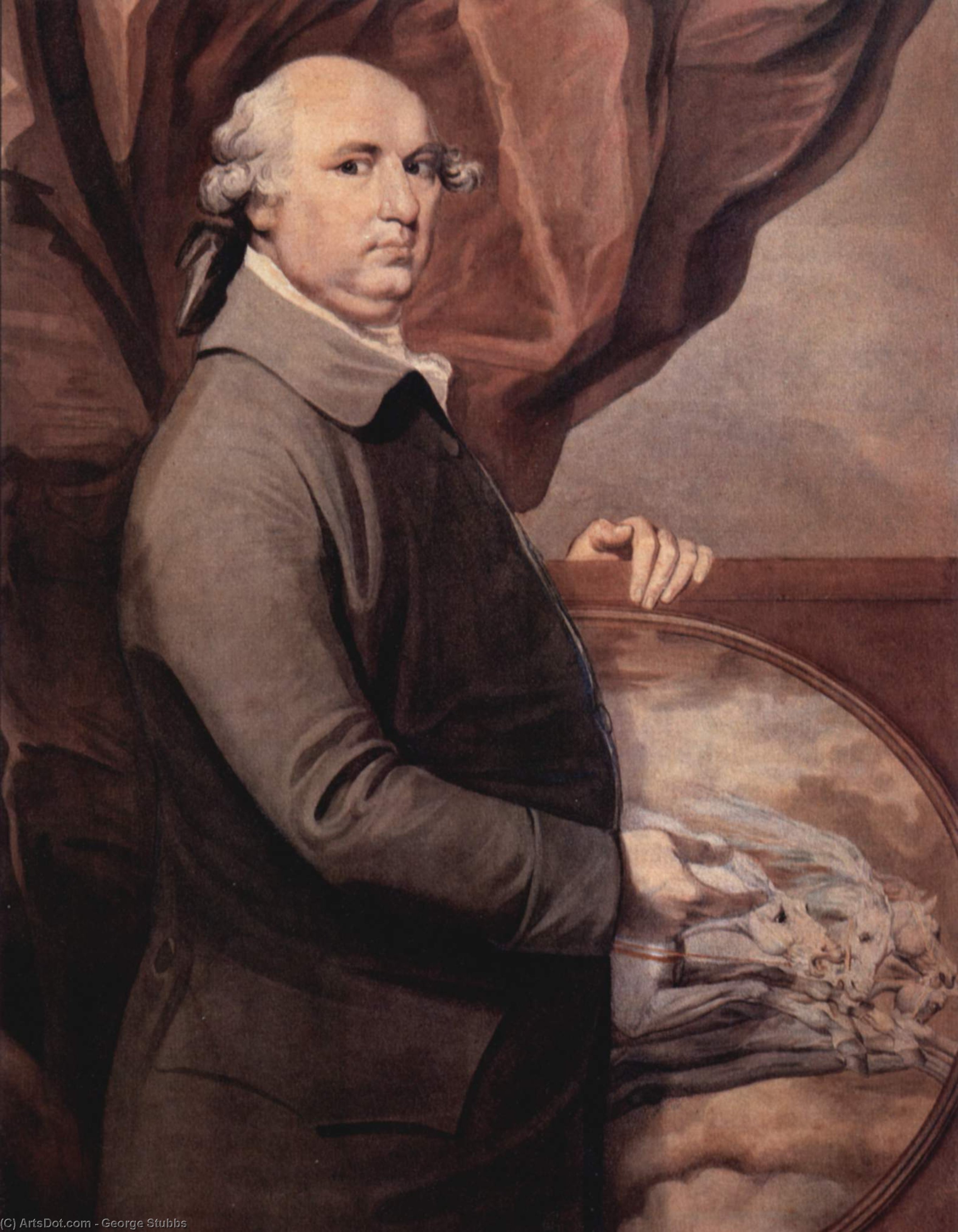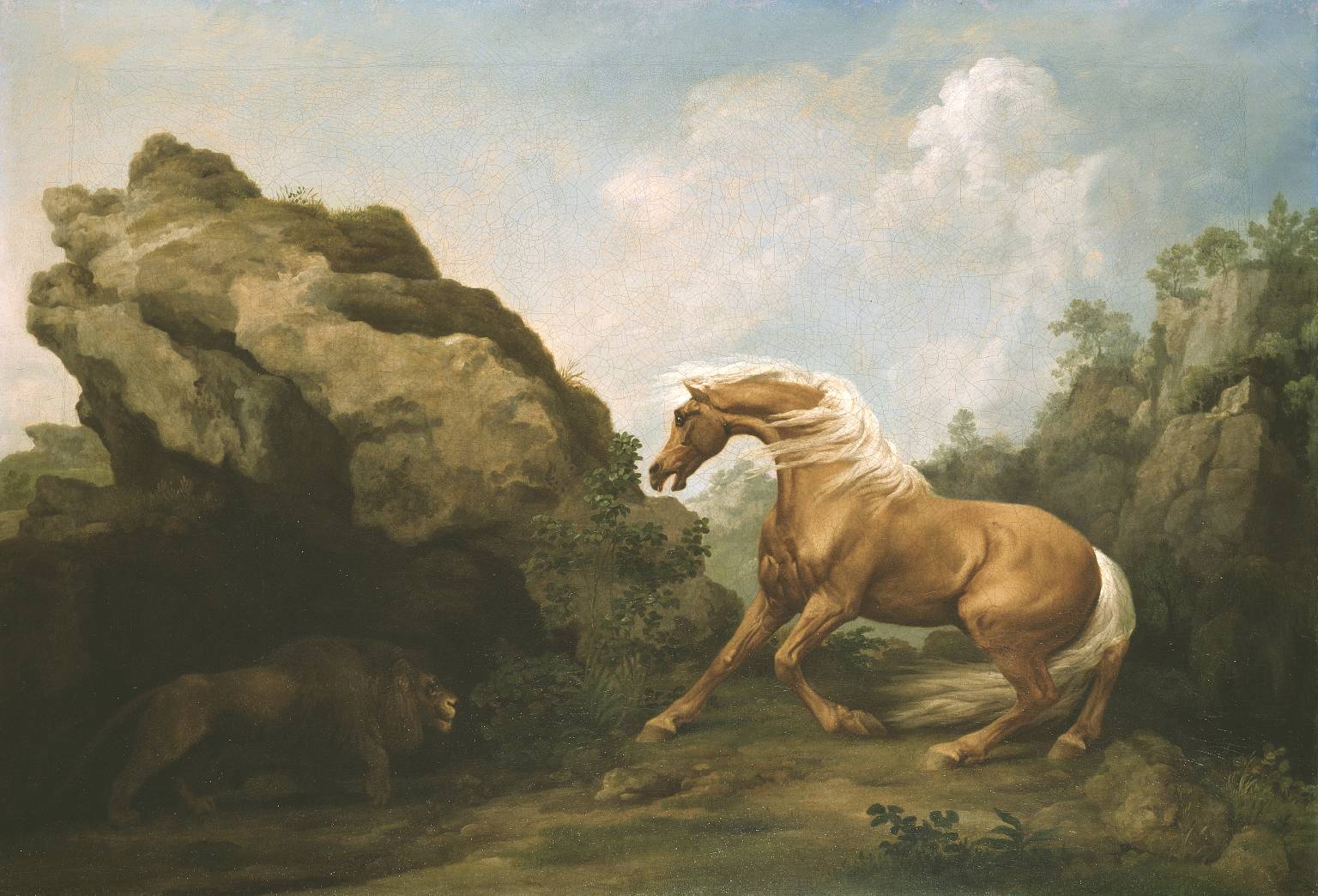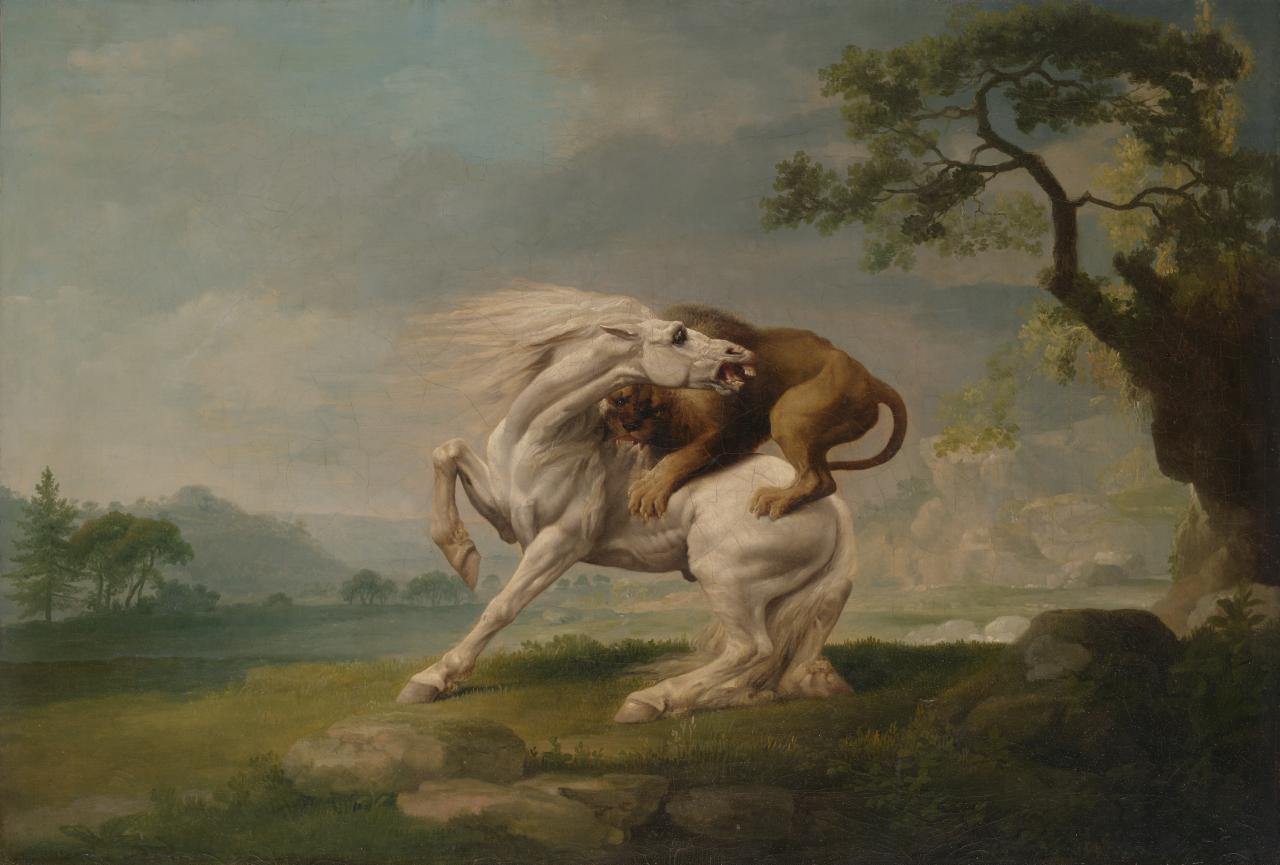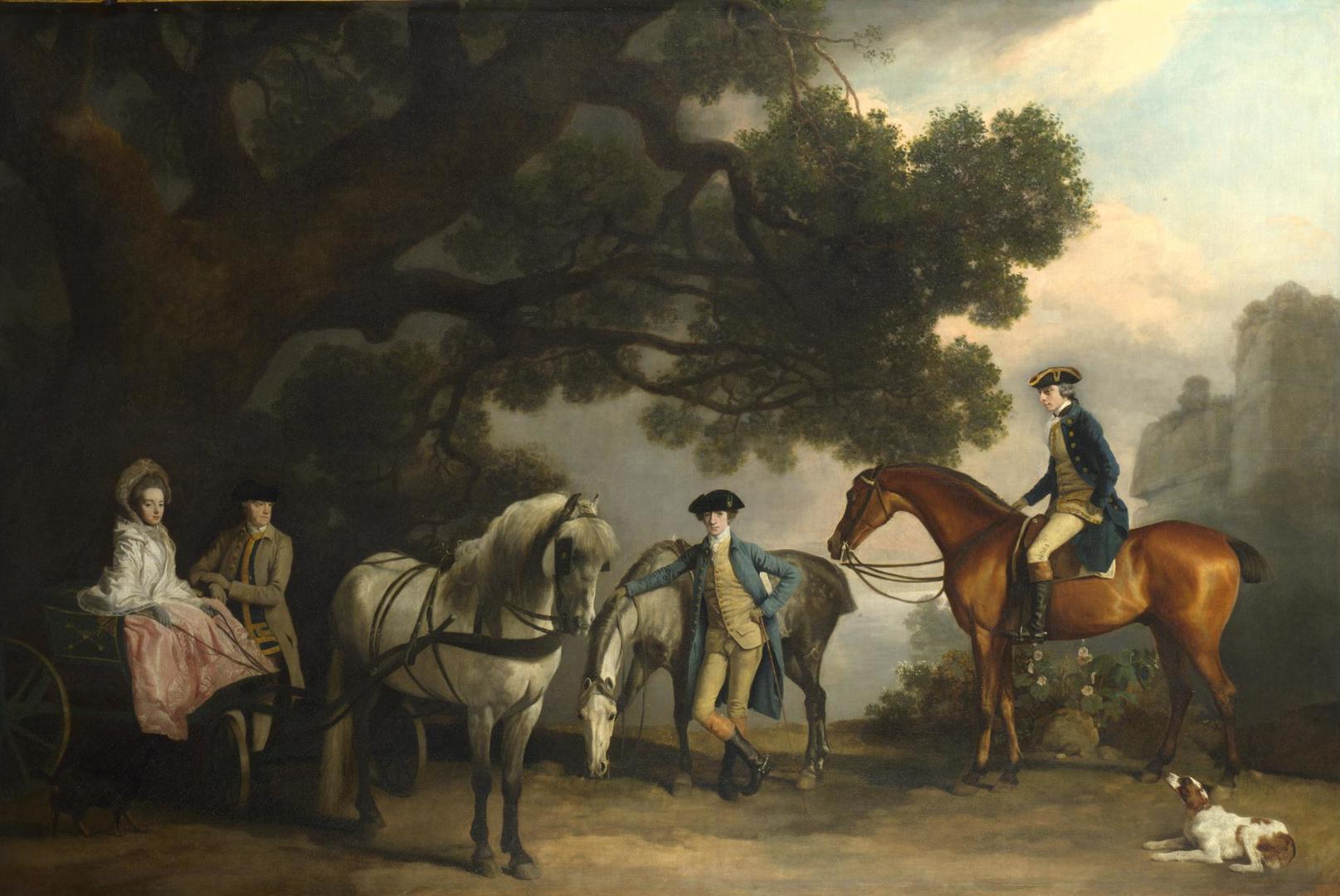George Stubbs (1724-1806) was an English painter famous for his realistic depictions of horses and other animals. Stubbs
was a self-taught artist who specialised in animal anatomy, carefully studying the structure and movement of horses and
other animals in their natural environment. This enabled him to depict them with great accuracy and realism in his
paintings.
Stubbs also pioneered the technique of oil painting directly on canvas rather than on wooden panels, which enabled him
to create large, more portable paintings.

His most famous work is Whistlejacket, a portrait of a riderless racehorse, painted in 1762. The painting is an impressive example of Stubbs's ability to capture the beauty and natural movement of animals.
Stubbs also devoted himself to anatomy, producing a series of engravings illustrating the bones and muscles of animals, as well as their internal organs. This work, entitled "The Anatomy of the Horse", became an important resource for veterinarians and artists.
TRY SLIDING THE IMAGE
Stubbs' influence on animal painting and animal anatomy has been lasting. His realistic technique and style have been
imitated and admired by many artists, including some of the great masters of painting such as Edgar Degas. In addition,
his work has been a source of inspiration for scholars and enthusiasts of animal anatomy and zoology.
Today, Stubbs is considered one of the greatest animal painters in the history of art. His scientific approach and his
ability to capture the essence of animals has been admired by later artists, including the Impressionists and modern
artists.


